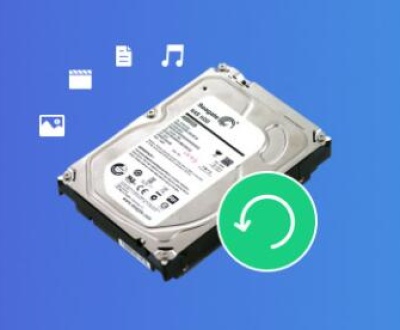Understanding how a computer “ate” or lost files involves delving into several technical aspects that can lead to data loss.
1. Hardware Failures
One of the most common reasons for data loss is hardware failure. Computers rely on various hardware components to store and manage data, and any malfunction in these components can lead to data corruption or loss.
Hard Drive Failures: Traditional hard drives (HDDs) are mechanical devices with moving parts. Over time, these parts can wear out, leading to physical damage. Common issues include head crashes, spindle motor failures, and bad sectors. When the hard drive fails, it may become unreadable, leading to the loss of any files stored on it.
Solid-State Drive (SSD) Failures: SSDs are more reliable than HDDs because they have no moving parts, but they aren’t immune to failure. SSDs use NAND flash memory, which has a limited number of write cycles. Over time, as the SSD is used, these write cycles are exhausted, leading to potential data loss. Additionally, SSDs can suffer from firmware issues, controller failures, or sudden power loss, which can corrupt data.
Memory (RAM) Errors: Random Access Memory (RAM) is used by computers to temporarily store data that is being processed. If there is a fault in the RAM, it can cause data to become corrupted as it is being written to or read from storage. This can result in files that are incomplete or unusable.
Motherboard and Power Supply Failures: The motherboard connects all the components of the computer, and the power supply ensures that these components receive the necessary electrical power. If either of these fails, it can lead to sudden system shutdowns or erratic behavior, which can, in turn, cause data corruption or loss.

2. Software Issues
Software glitches, bugs, and conflicts are another significant cause of data loss. These can occur at various levels of the operating system, file system, or applications.
Operating System Corruption: The operating system (OS) is the software that manages the hardware and software resources of a computer. If the OS becomes corrupted—due to an update failure, improper shutdown, or malware—it can lead to data loss. For example, a corrupted OS might fail to boot properly, making files inaccessible.
File System Corruption: The file system is a critical part of the OS that dictates how data is stored and retrieved. If the file system becomes corrupted, files can become inaccessible or lost. This can happen due to improper shutdowns, software bugs, or physical damage to the storage device.
Application Crashes: When an application crashes while it is writing to a file, it can leave the file in an incomplete or corrupted state. This is especially common with applications that handle large files or complex data, such as video editing software or databases.
Software Bugs and Glitches: Even well-tested software can have bugs that cause data loss under certain conditions. For example, a bug in a file management application might accidentally delete files, or a glitch in a backup program might fail to copy all the necessary files.
3. User Errors
Human error is a common and often overlooked cause of data loss. Even with the best hardware and software, mistakes made by users can result in files being deleted or overwritten.
Accidental Deletion: It’s easy to accidentally delete the wrong file, especially when working with large numbers of files or when using automated tools. While files moved to the Recycle Bin or Trash can often be recovered, those deleted permanently or from command-line interfaces may be harder to retrieve.
Formatting Errors: Users may accidentally format a drive or partition, wiping out all the data on it. This can happen when reinstalling an operating system or preparing a drive for new use.
Overwriting Files: When saving a file, users may accidentally overwrite an existing file with the same name, leading to the loss of the original file. Some applications allow for version control, but if this feature is not enabled, the old file may be irretrievable.
Improper Shutdown: Shutting down the computer improperly, such as by holding down the power button, can lead to file system corruption and data loss. This is especially risky if the computer was in the process of writing data when it was shut down.
4. Malware and Viruses
Malicious software is another major threat to data. Malware can range from relatively benign adware to highly destructive viruses and ransomware.
Ransomware: This type of malware encrypts the user’s files and demands a ransom for the decryption key. If the ransom is not paid (or if the decryption process fails), the files are effectively lost. Even if the ransom is paid, there is no guarantee that the files will be recovered.
Viruses and Worms: These types of malware can spread through a computer system, corrupting files or deleting them entirely. Some viruses are designed specifically to target and destroy user data, while others may cause data loss as a side effect of their main purpose.
Spyware and Keyloggers: While these types of malware are typically used to steal information, they can also cause data loss. For example, spyware might inadvertently corrupt files as it collects data, or a keylogger might introduce errors into important documents as it records keystrokes.
5. Environmental Factors
Environmental factors, such as power surges, physical damage, and extreme temperatures, can also lead to data loss.
Power Surges and Outages: A sudden loss of power or a power surge can cause a computer to shut down unexpectedly. If the computer was writing data to the hard drive at the time, this can lead to file corruption. Additionally, power surges can damage the hardware components of the computer, leading to data loss.
Physical Damage: Computers are sensitive devices, and physical damage can easily lead to data loss. Dropping a laptop, spilling liquid on it, or exposing it to extreme temperatures can damage the hard drive or other components, making the data inaccessible.
Natural Disasters: Events such as floods, fires, or earthquakes can destroy a computer entirely, resulting in the loss of all data stored on it. While data recovery services can sometimes retrieve data from damaged drives, the success rate varies depending on the extent of the damage.
6. Network and Cloud Issues
With the rise of cloud computing and networked systems, data loss can also occur due to issues in these areas.
Sync Errors: Cloud storage services rely on synchronization between local files and the cloud. If there is an error in this process, files might be deleted, overwritten, or corrupted. This is particularly a risk when multiple devices are syncing the same files, or if the internet connection is unstable.
Data Breaches and Hacks: Cyberattacks on cloud storage providers or networked systems can lead to data loss. Hackers might delete files, corrupt data, or lock users out of their accounts. Even if data is backed up, it can take time and resources to recover from such an attack.
Cloud Service Failures: While cloud providers generally have robust systems in place to prevent data loss, they are not infallible. A failure at the provider’s end—such as a server malfunction or data center outage—can result in temporary or permanent loss of data.
7. Preventing Data Loss
Given the many potential causes of data loss, prevention is critical. Here are some strategies to protect your data:
Regular Backups: The most effective way to prevent data loss is to regularly back up your files. This can be done using external hard drives, cloud storage, or dedicated backup software. Ensure that backups are stored in multiple locations to protect against physical damage or theft.
Use Reliable Hardware: Invest in high-quality hardware, including SSDs and reliable power supplies. Consider using uninterruptible power supplies (UPS) to protect against power surges and outages.
Keep Software Updated: Regularly update your operating system and software to protect against bugs and security vulnerabilities. Use reputable antivirus software to defend against malware.
Be Cautious with Emails and Downloads: Avoid opening suspicious emails or downloading files from untrusted sources. Many viruses and malware are spread through email attachments and downloads.
Educate Yourself and Others: Many data loss incidents are caused by user error. Educate yourself and others about the importance of data management, including safe file handling, proper shutdown procedures, and the risks of malware.
8. Recovering Lost Data
If data loss occurs, there are several methods that can be used to attempt recovery:
Use Data Recovery Software: There are various data recovery tools available that can scan your drive for deleted files and attempt to recover them. However, success is not guaranteed, especially if the data has been overwritten.
Consult a Professional Data Recovery Service: If the data is critical and you cannot recover it using software, consider consulting a professional data recovery service. These services have specialized equipment and expertise to recover data from damaged or corrupted drives.
Restore from Backup: If you have a backup of your files, you can restore them from the backup. This is the simplest and most effective method of data recovery.
About us and this blog
Panda Assistant is built on the latest data recovery algorithms, ensuring that no file is too damaged, too lost, or too corrupted to be recovered.
Request a free quote
We believe that data recovery shouldn’t be a daunting task. That’s why we’ve designed Panda Assistant to be as easy to use as it is powerful. With a few clicks, you can initiate a scan, preview recoverable files, and restore your data all within a matter of minutes.
Subscribe to our newsletter!
More from our blog
See all postsRecent Posts
- How to save tiktok videos on computer 2025-04-30
- How to watch gopro videos on computer 2025-04-30
- How to save video from blink video doorbell to computer? 2025-04-30

 Try lt Free
Try lt Free Recovery success rate of up to
Recovery success rate of up to









